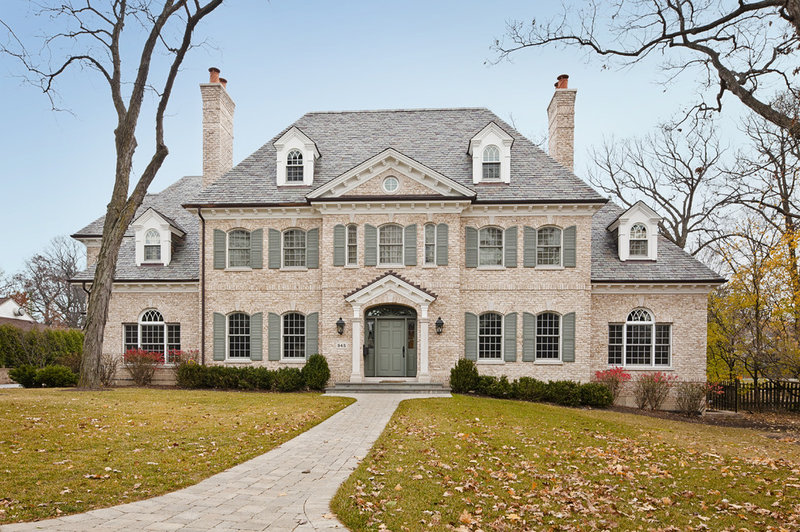Roots of Style: Georgian Homes Offer Familiarity Through the Ages
Georgian architecture began in England as the result of the Renaissance's reaching the British islands in the middle of the 16th century, after its emergence from Italy and succession in France. The Georgian interpretation of classical architecture flourished in England in the late 17th and early 18th centuries, coinciding with the establishment of the American colonies.
Americans built in the Georgian style for most of the 1700s, and it was not until the 1780s that the nearly identical Adam style began to take over.
In the simplest terms, a Georgian-style house has a centered entrance door and two multipaned sash windows on each side of the entrance, sometimes with five aligning windows on a second level. Most but not all are two stories, and in some cases they are three, in addition to there being urban townhouse versions.
Though the house here is considered a Cape Cod, this type of one-story design was popular in the Southern colonies during Georgian dominance. The side gabled roof is one variation.
Others may have a hipped roof, a gambrel roof or a centered front-facing gable combined with either a hip or gable roof. Single-level originals usually have dormers, while two-story versions may or may not have them. Also, many Southern examples are brick construction; wood-frame construction is more typical in Northern originals.
If the porch extends beyond the entrance to enclose other windows or the whole facade, the design is likely in the classical revival style. Chimney placement varies also but usually adds to the stout appearance of this style. Dentils trim the eave line; variations on this detail are often unique to each house.
Consider the simplicity of the Georgian plan. The second floor fits exactly atop the first, and the organization of rooms extends off the central entrance and interior hall where the stairs are placed. This practical and efficient layout has stood the test of time.
The gabled entrance porch has another pediment, while quoins and arched impressions in the brick above the lower-level windows further express the theme. Notice the prominent modillions. The number and placement of the second-floor windows is unusual.
In smaller Georgian houses, there could be a single window on either side of the entrance, in larger homes there could be as many as three on each side. Among three-, five- and seven-rank fenestration, five is by far the most common.
Contemporary interpretations of Palladian windows set off the side sections. Unusual here you'll find the segmented arched windows of the main facade. Originals sometimes had a brick lintel stacked vertically in this same shape, but this window formation was very rare. There is also a brick belt line, which is another element found in some, but not all, Georgians.
An ironic flexibility exists within the Georgian style: Houses can be very small, or they can be the most extravagant mansions.
In this 20th-century Georgian, a primary, symmetrical front section (or elevation) is flanked by varying but still ordered sections. The closely related Adam style replaced Georgian at the turn of the 19th century. Classical revival, the style with large porches with prominent columns, supplanted Adam in the middle of the 1800s.
Early-20th-century tastes revived many earlier styles, including Georgian, while the advent of historic preservation and restoration created an affectionate following.
Roots in classical architecture and a strong and popular history continue to support traditional design through present times. Even if you don't live in a traditional-style house, chances are there is one close by.
Author:












